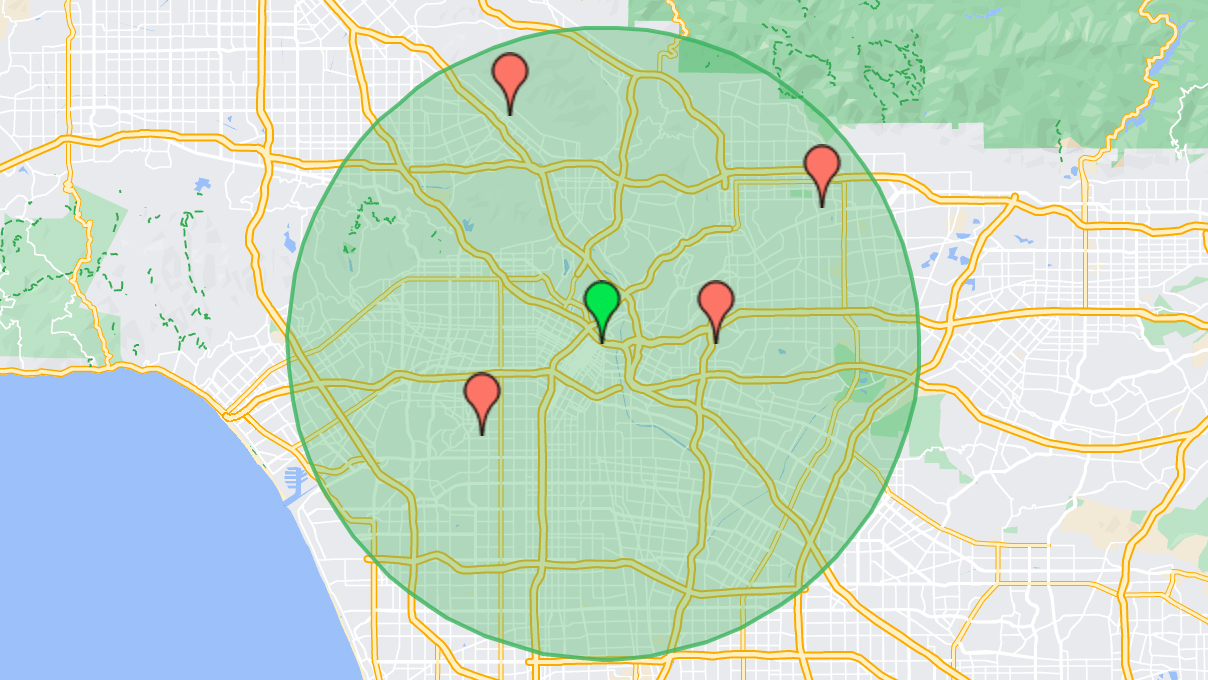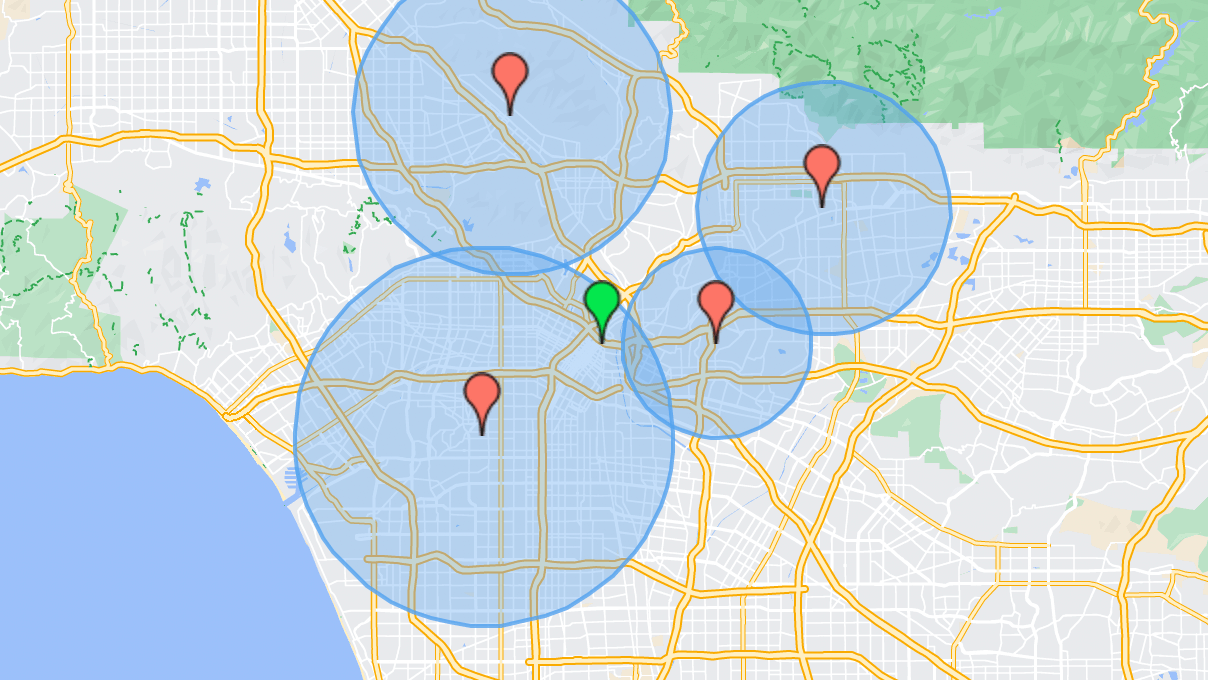Reverse Proximity Search
Typically, a proximity search is conducted by measuring the distance from a center point. You can optionally specify a search radius to limit results to be within a specific geographic circle.
In a typical proximity search, this is specified via the standard range option...
{# Get results within 20 kilometers #}
{% set options = {
'target': target,
'range': 20,
'units': 'km'
} %}
This approach works great for 98% of proximity search situations. It assumes that the center point is solely responsible for determining how far away a valid destination can be.
Visualization of a normal proximity search:

However, you will occasionally need to flip that logic around. Sometimes, each location will have a different permissible range. If each location has a different allowable radius, then you can't just rely on a singular search range from the point of origin.
# A Practical Example
Let's say you are running a network of radio stations. Each station should be available to users within a predetermined distance from the radio station. If you are close enough to a given station, you will be able to access their feed.
But each station has a different antennae range! Some stations are available within 5 kilometers of a user, others are available within 10 kilometers, etc. Your proximity search will need to take into account the individual radius of each location.
Visualization of a reverse proximity search:

In the example above, there is only one valid result. The user (green marker) is only within range (blue circle) of a single radio station.
# Reverse Radius
When you need to perform a reverse proximity search, there are only two simple steps:
Add a new Number field to your existing locations channel. Name it "Location Range" (or whatever you prefer). This new field will be used to store the radius of each location.
When writing the proximity search query, use the
reverseRadiusoption. Specify the handle of your new field (ie:locationRange).
By specifying a reverseRadius value, the plugin will flip the proximity search around, using the radius of each individual location to determine whether to include it in the search results.
{# Use the `locationRange` field for a reverse proximity search #}
{% set options = {
'target': target,
'reverseRadius': 'locationRange'
} %}
For context, here is a complete example using the reverseRadius option...
{# Get proximity search target from user query #}
{% set target = craft.app.request.getParam('near') ?? null %}
{# Configure the reverse proximity search #}
{% set options = {
'target': target,
'reverseRadius': 'locationRange'
} %}
{# Run the reverse proximity search #}
{% set entries = craft.entries
.section('locations')
.myAddressField(options)
.orderBy('distance')
.all() %}
With the reverseRadius in place, your search results will include nearby locations according to the range of each individual location.